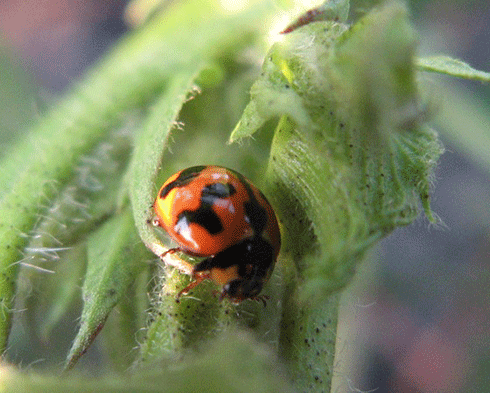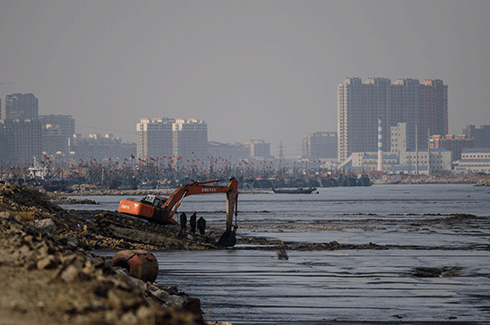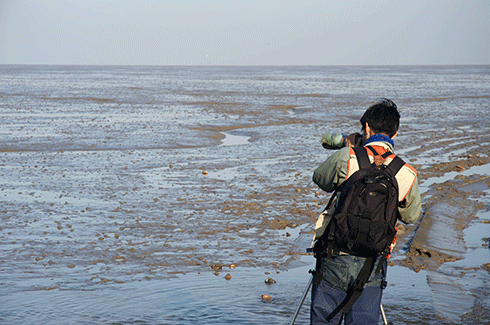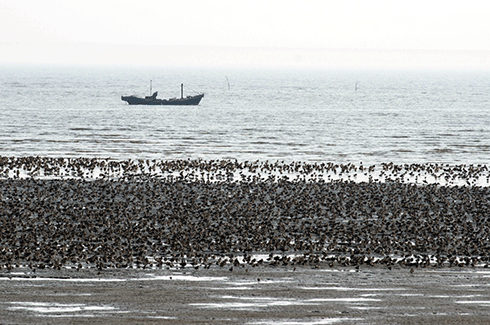
|
Published: 17 December 2013
The real cost of pesticides in Australia's food boom
More than $17 billion worth of crops grown in Australia annually is attributed to agricultural pesticides. That’s a staggering 68 per cent of the $26 billion industry, according to a recent Deloitte report commissioned by CropLife Australia. So should we all pat ourselves on the back and eat up?

|
|
Insect predators such as this ladybird can control pests just as well as pesticides. Credit: Nancy Schellhorn
|
Most of us want cheap, perfect-looking produce and farmers want to make a decent living. Agricultural pesticides have undoubtedly reduced food loss and helped farmers provide the unblemished produce we have grown so used to.
But pesticides also represent a significant source of risk for human and wildlife health, and pollution into our waterways. Should we be concerned about these ‘costs’, and how do we account for them?
What are the costs of pesticides?
Pesticides (insecticides, herbicides and fungicides) are applied over large areas in agriculture and urban settings. Their use represents an important source of diffuse chemical pollution that is difficult to monitor and difficult to control.
The overuse and reliance on pesticides has resulted in weeds and insects developing resistance to insecticides and herbicides. This results in excessive, ever-increasing pesticide use in an attempt to get on top of the problem.
For example, in the early 90s, the overuse of insecticides resulted in resistant cotton bollworm (a serious moth pest of cotton), which nearly brought the cotton industry to its knees. New technology – genetically modified cotton expressing a bacterial toxin that kills only moths including the bollworm – has been a saviour to the industry and insecticide use has reduced by 87 per cent.
Australia also has the worst weed-resistance problem in the world, and many herbicides are no longer an option for control. Producing crops at a profit may be at risk, and the only way to get on top of the problem is likely to be by non-chemical means.
Pests developing resistance to pesticides isn’t the only problem. The use of ‘broad-spectrum’ insecticides also wipes out all the good insects – the ones that eat the pests munching away at crops. Consequently, other pest insects that escaped the initial spray are able to grow large populations unchecked.
Unfortunately broad-spectrum pesticides are some of the cheapest chemicals in Australia costing only $1.50 per hectare to apply in grain crops, making them an obvious choice for many farmers. These issues in themselves are challenging to manage not to mention the cost to human health and wildlife.
Insects are animals with neurological systems, and many insecticides, particularly organophosphates – a widely used class of insecticides – are neurotoxins to insects and to humans. Organophosphates are still widely used in agriculture in Australia even though many have been banned in the EU, and banned or restricted in the USA. Rarely do we ever measure these costs.
What are the alternatives?
The challenge is to reduce the risk from excessive pesticide exposure while maintaining and increasing the level of crop productivity. What are our alternatives?
There is an extensive range of policy instruments used by many countries to address human and ecosystem health concerns and pesticide pollution of water and air. These include regulation; payments to encourage lower use and more accurate application; pesticide taxes to encourage greater use efficiency by farmers; and advice and information for farmers on ‘best practice’.
For example, in 2008 the French government launched EcoPhyto Plan with a goal to reduce the use of pesticides and plant protection products by 50 per cent by 2018, with an annual budget of ?41 million (A$61 million).
In 2009, the EU adopted ‘Integrated Pest Management’: legislation to achieve sustainable use of pesticides and prioritise non-chemical methods. The legislation takes effect in 2014.
This strategy will include a range of alternative management strategies to pesticides that can help control pests.
For pest insects, we can grow new crop varieties more tolerant to pest damage. We can manage weeds in fields and around field edges. We can conserve insect predators such as spiders and ladybirds. And we can selectively use insecticides that leave predators unharmed.
Research has also shown that native vegetation on farms can support these insect predators and native fauna. Managing vegetation to promote beneficial insects is known as ‘pest-suppressive landscapes’, which could be a part of integrated pest management.
Another method may be crop rotation that produces ‘biofumigation’ activity, such as mustards, which produce a compound that inhibits fungal growth. These strategies can reduce soil-borne pathogens and break the disease cycle.
Where next for Australia?
If we compare pesticide sales and crop production in Australia we find that both increased from the early 1990s to early 2000s.
But for many OECD countries we now find that crop production has been decoupled from growth in pesticides. Instead, crop production has been boosted by other factors, including education and training, payments for beneficial pest management, pesticide taxes, new pesticide products that can be used in smaller doses, and the expansion of organic farming.
In Australia there is actually very little data on pesticide use and environmental impact. This makes it difficult to judge how Australia is tracking against other countries, and how our flora and fauna are responding with continued exposure to these toxins.
Many groups and public lead alliances have expressed serious concerns about the way pesticides are regulated in Australia and about the implications for human health and the environment; several dozen pesticides banned in Europe are currently registered and used commonly in Australia.
Protecting crops against damage from weeds, insect pests and disease is an ongoing challenge. Integrated approaches, where chemical control is but one option – not the only option, and support for innovation from science, industry and farmers – will see us tackle these challenges.
Greater support for the development and registration of ‘softer chemicals’ that are less toxic to the farm workers, and the environment, is needed. Australian farming is one of our most trusted industries precisely because we take steps to protect our people and our environment. We can’t get complacent if we’re to maintain that trust.
Dr Nancy Schellhorn is Team Leader, Spatial Ecology at CSIRO. Dr Anna Renwick is a research ecologist at the University of Queensland. Dr Sarina Macfadyen is a research scientist at CSIRO. This article was originally published at The Conversation.





